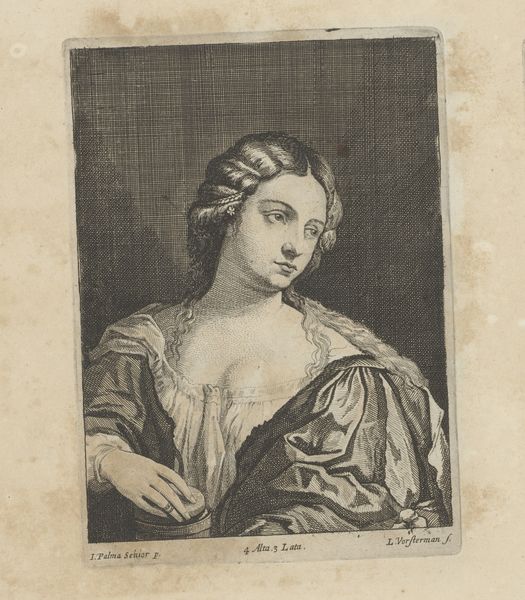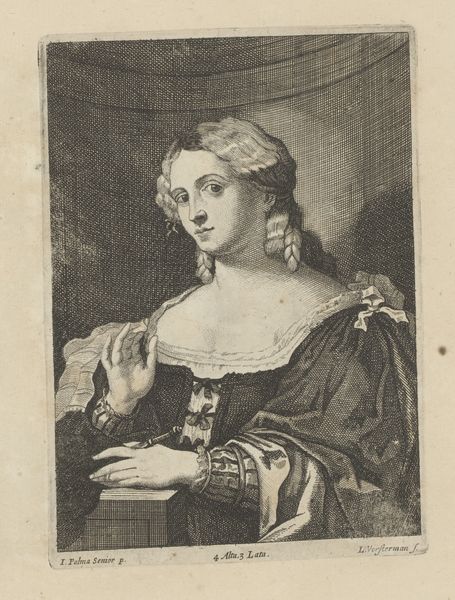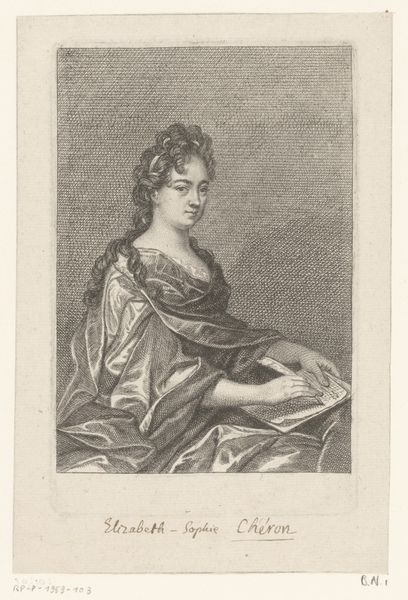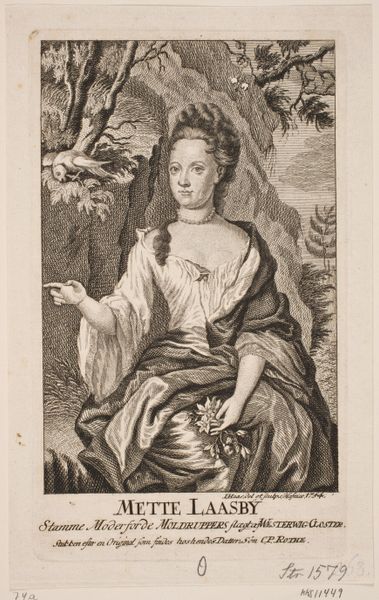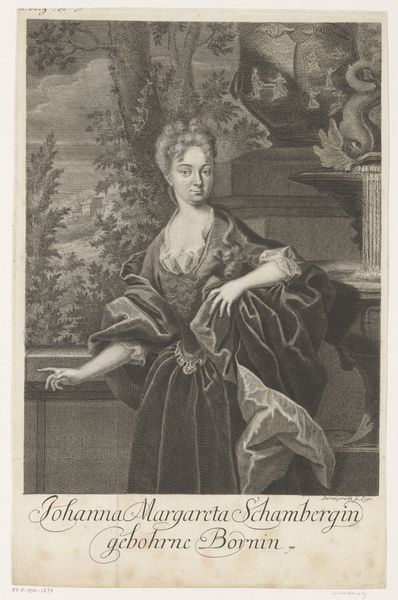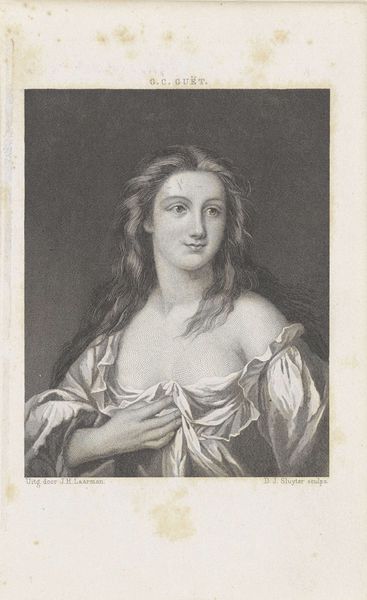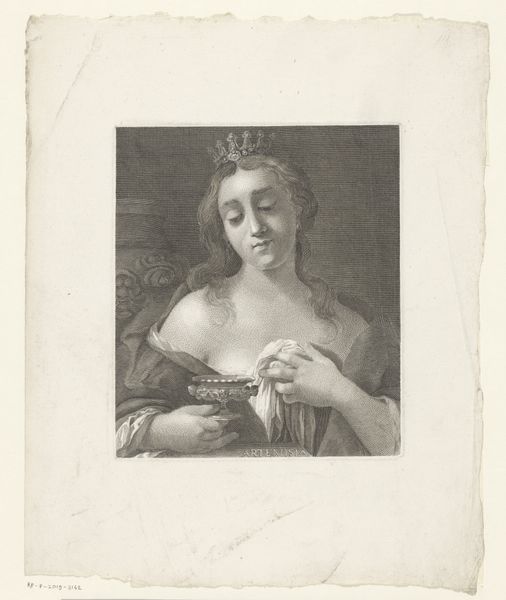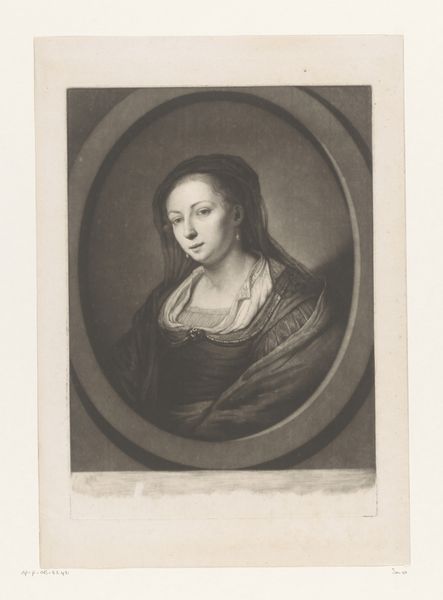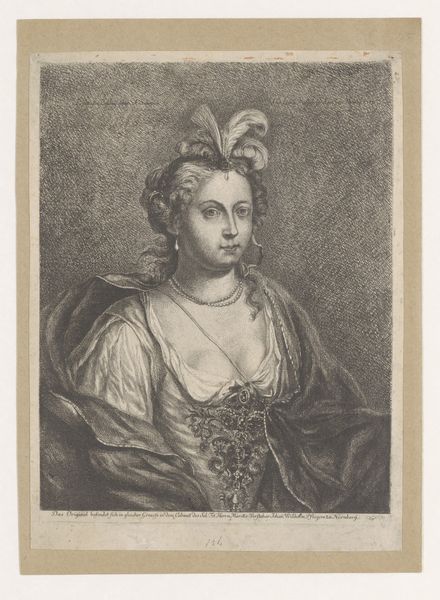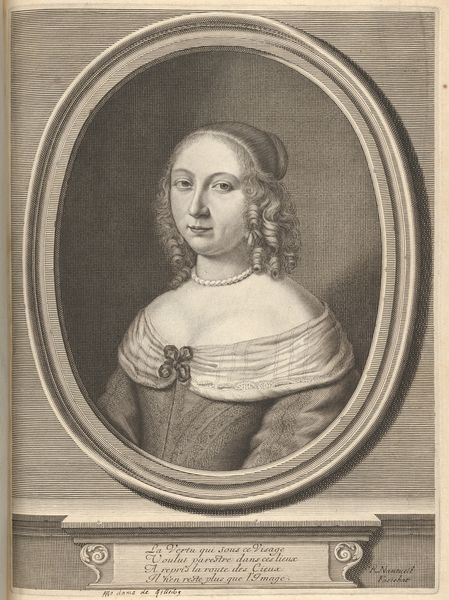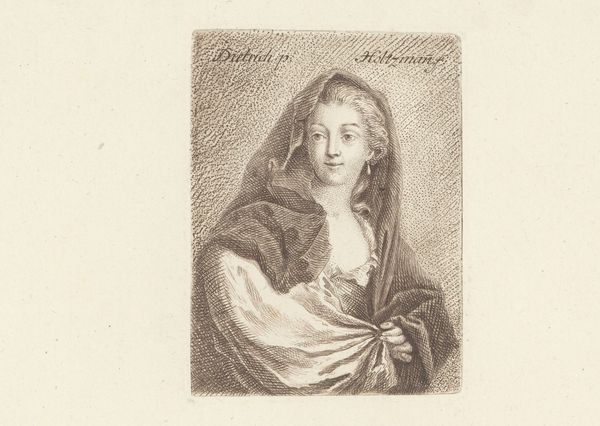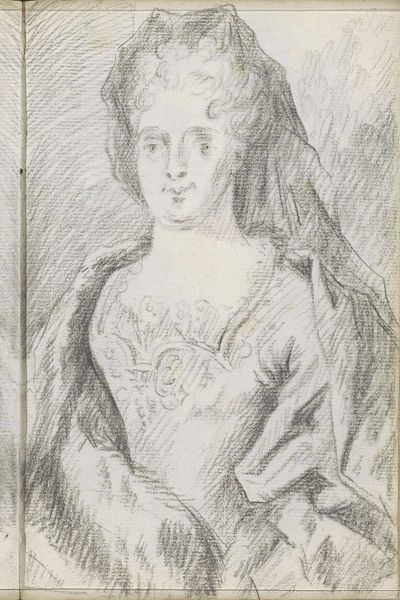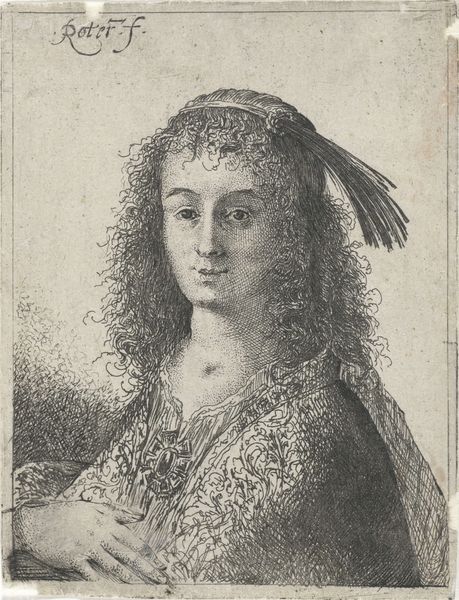
print, engraving
#
portrait
#
baroque
# print
#
figuration
#
engraving
Dimensions: height 158 mm, width 113 mm
Copyright: Rijks Museum: Open Domain
Editor: Here we have Lucas Vorsterman II’s “Portrait of a Young Venetian Woman,” dating back to 1660. It’s an engraving, giving it a delicate, almost fragile quality. What's striking to me is how this artwork, a print, makes an image of a woman so widely available at the time. What's your read? Curator: Well, consider the rise of printmaking in the 17th century. It wasn't just about art; it was about disseminating images, ideas, and even social statuses. Think about the intended audience: who would have been consuming these images of Venetian women, and why? The mass reproduction changed how people viewed images and also who could possess them. Editor: So, the availability of art shifted power? Who got to participate in art culture, so to speak? Curator: Precisely. And portraits, in particular, became tools for projecting not just likeness, but also status, ideals, and even political allegiances. This engraving suggests Venice’s place in cultural imagination, its beautiful woman replicated for circulation. Consider, too, that Vorsterman was working in Antwerp - what relationship was he hoping to establish to Venice with this image? Editor: I hadn't considered the distance, Antwerp looking at Venice, so to speak. What power dynamics are at play in that transaction, where one city, one culture, consumes an image of another? It sounds like a form of Baroque-era social media! Curator: In some ways, yes. These images helped construct and circulate ideas about gender, beauty, and even national identity. Printmaking makes imagery accessible for a growing public, who begin to formulate views and opinions that could differ from the traditionally powerful patrons of the arts. Editor: This has given me a whole new appreciation for prints, seeing them as agents of cultural distribution and the democratization of image consumption. Curator: Absolutely. And it’s important to remember the layers of history embedded within them.
Comments
No comments
Be the first to comment and join the conversation on the ultimate creative platform.
